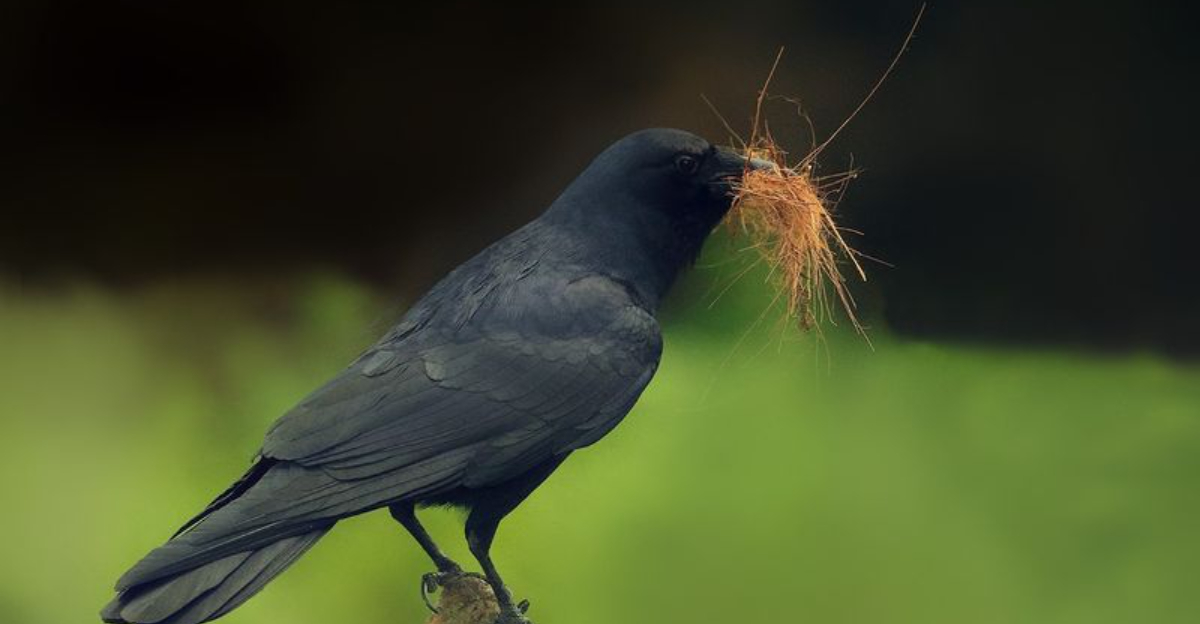When you spot a black bird in the wild, it’s easy to assume it’s a crow. However, many other black birds share a similar appearance.
This guide explores such birds, providing detailed descriptions and intriguing facts about each. Whether you’re a seasoned birder or just starting, recognizing these avian wonders will enhance your birdwatching experience.
1. Common Grackle
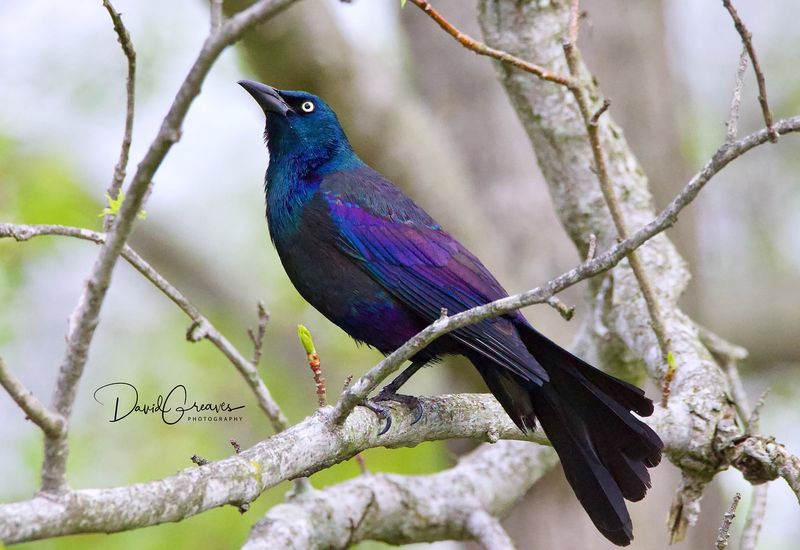
The iridescent plumage of the common grackle sets it apart from the typical crow. This bird, often seen in large flocks, has a unique glossy finish on its feathers that shimmer with hues of purple and green. Its long tail and pronounced keel-shaped bill add to its distinctive look.
Common grackles are known for their adaptability, thriving in both urban and rural environments. Their diet is versatile, ranging from insects to seeds. You might notice them scavenging in parking lots, displaying their opportunistic nature.
Unlike crows, grackles produce a range of harsh, metallic sounds. These vocalizations, combined with their striking appearance, make them a memorable sight. Spotting a grackle often means observing their social behavior, as they interact in noisy, bustling groups.
2. European Starling
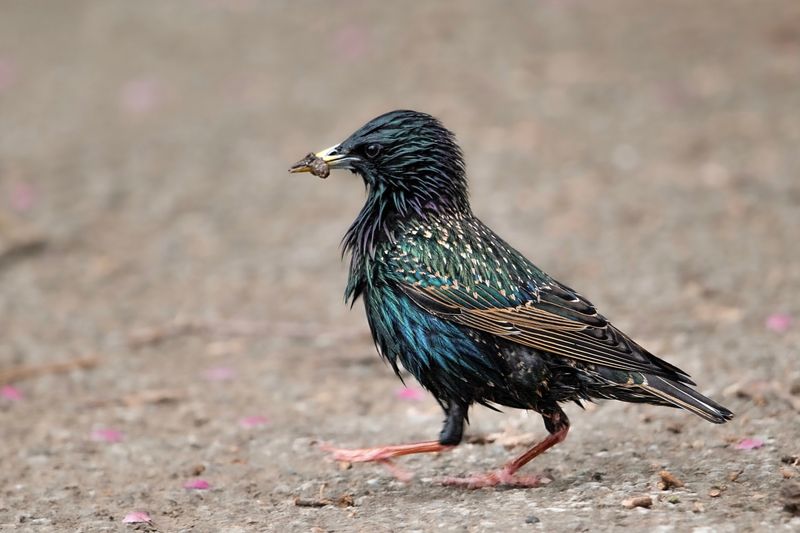
European starlings, with their speckled black plumage, are another bird that might be mistaken for a crow. In sunlight, their feathers reveal a hidden beauty, reflecting purples, blues, and greens. These medium-sized birds are known for their compact body and short, pointed bill.
Starlings are incredibly social, often found in large flocks that perform mesmerizing aerial displays known as murmurations. Their adaptability has made them a common sight in cities and farmlands alike.
Their vocal prowess is remarkable, mimicking sounds from their environment, including other birds and even machinery.
This ability to imitate has endeared them to many, despite their reputation as aggressive invaders in some regions. Observing starlings offers a glimpse into their complex social structures and survival skills.
3. Red-Winged Blackbird
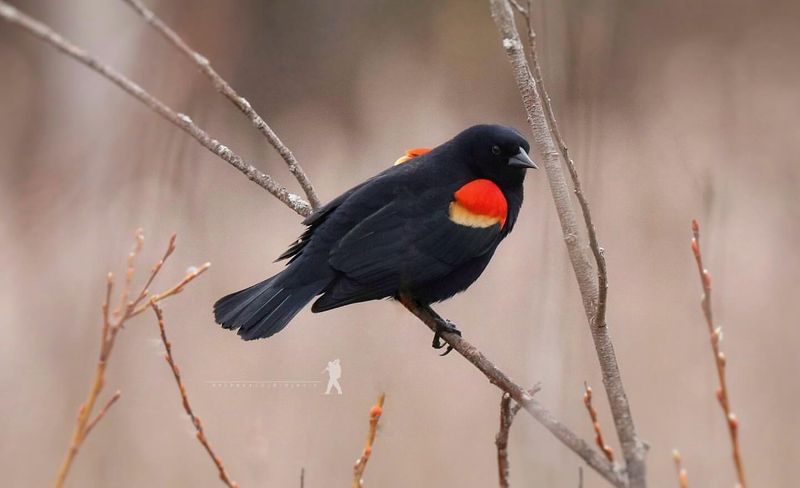
With striking red and yellow shoulder patches, the red-winged blackbird stands out against its otherwise black body. These birds are commonly found near wetlands, where their calls resonate over the marshes.
Males are particularly territorial during breeding season, often seen perched high, showcasing their colorful wings. Their presence is a sign of spring’s arrival in many regions. Red-winged blackbirds have a varied diet, feeding on insects and seeds.
Their adaptability to marshy habitats makes them a key species in wetland ecosystems. Observing these birds offers a chance to witness their remarkable adaptability and the vibrant splash of color they bring to their environment.
4. Rusty Blackbird
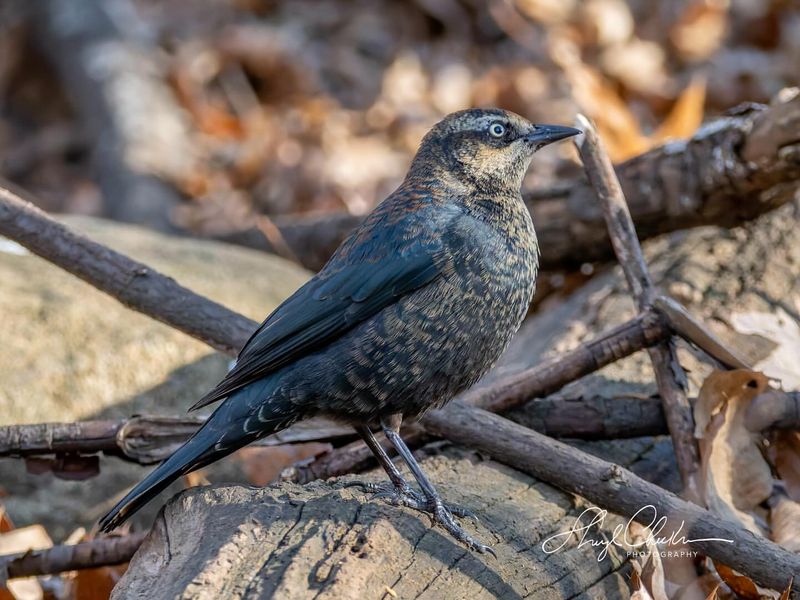
Rusty blackbirds are aptly named for the rusty edges on their feathers during the non-breeding season. This unique coloration distinguishes them from crows and other blackbirds. During breeding season, they transition to a more uniform glossy black.
Their preferred habitats include wet forests and marshes, where they forage for insects and small aquatic creatures. This choice of environment makes them less visible than some of their more urban counterparts.
Rusty blackbird populations have been declining, raising conservation concerns. Observing these birds can be a rare treat, offering insights into their elusive nature and the quiet beauty of their plumage in the right seasons.
5. Brewer’s Blackbird
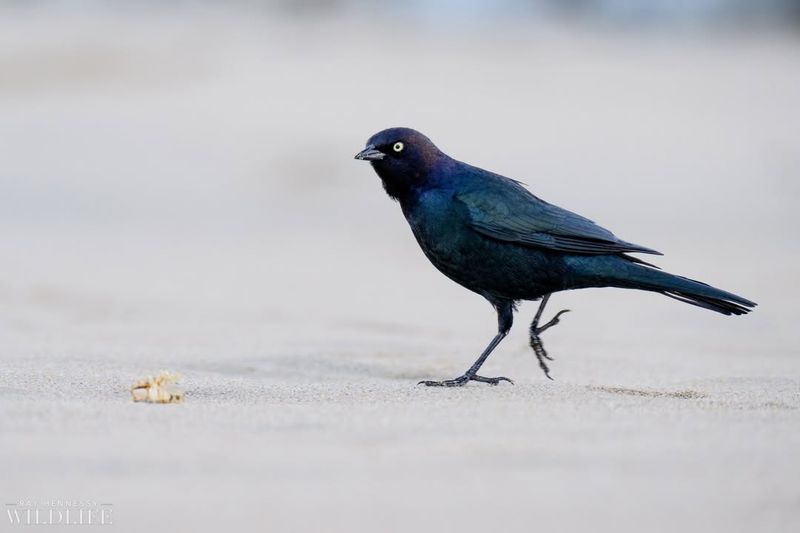
The brewer’s blackbird sports a glossy appearance that can easily be mistaken for a crow from afar. However, a closer look reveals subtle differences, such as its smaller size and purple sheen. These birds are often found in open habitats, including fields and parks.
They are social creatures, frequently seen in groups foraging on the ground, sometimes with other blackbirds or starlings.
Brewer’s blackbirds have a varied diet, including insects and grains. Their adaptability to human-altered landscapes makes them a common sight across North America. Watching these birds provides a window into their social dynamics and the beauty of their iridescent feathers.
6. Boat-Tailed Grackle
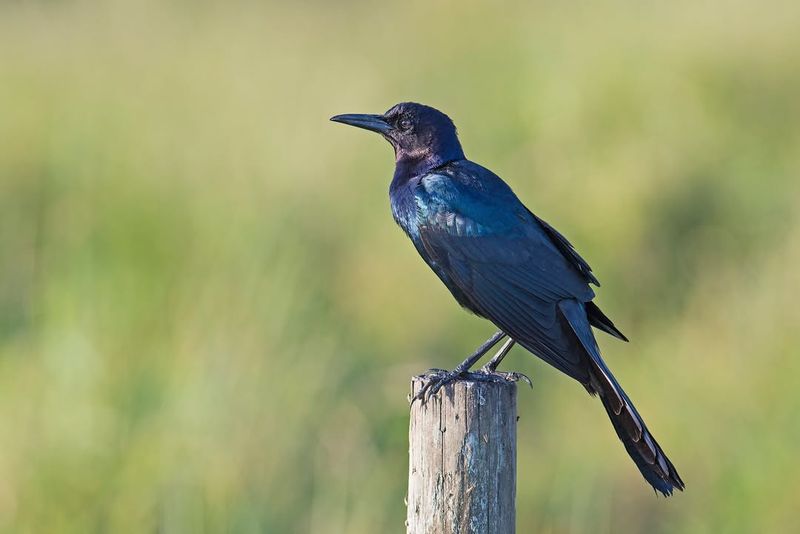
The boat-tailed grackle is notable for its long tail, which often resembles the shape of a boat’s keel. This feature, along with its iridescent black plumage, makes it stand out among other blackbirds. Typically found along the coastal southeastern United States, boat-tailed grackles are adapted to wetland habitats.
They forage for food along water bodies, eating a diet rich in insects, crustaceans, and seeds. Social in nature, these birds are often spotted in noisy flocks, displaying a range of vocalizations. Observing boat-tailed grackles offers insights into their behaviors and the intricate dynamics of their coastal ecosystems.
7. Pied Currawong
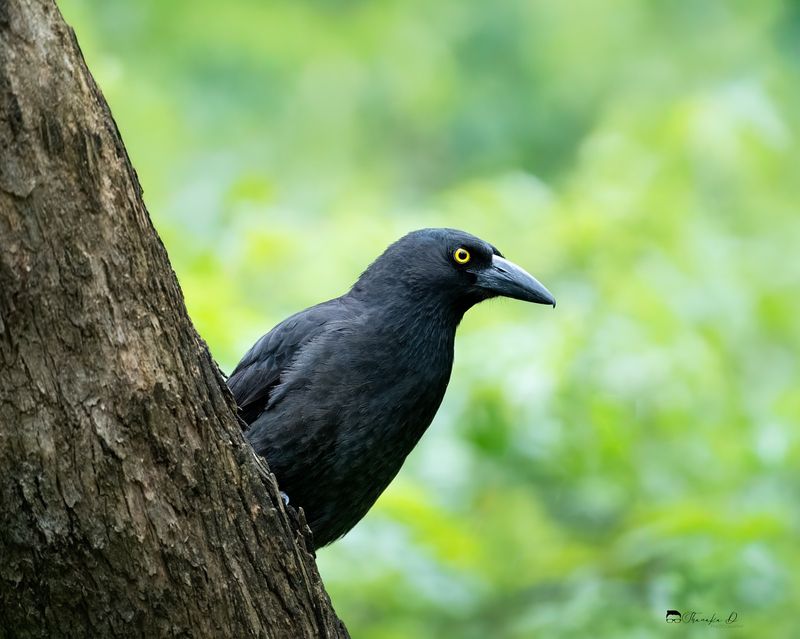
Pied Currawongs are native to Australia and are often mistaken for crows due to their size and color. They are distinguished by their black plumage with white patches on the wings and tail, and their striking yellow eyes.
These birds are highly adaptable, found in forests, woodlands, and even urban areas. Their melodious calls are a unique characteristic that sets them apart from the vocalizations of crows.
Pied Currawongs have a diverse diet, ranging from fruits and seeds to small animals. Their foraging habits help in seed dispersal, playing a vital role in their ecosystem.
8. Fish Crow
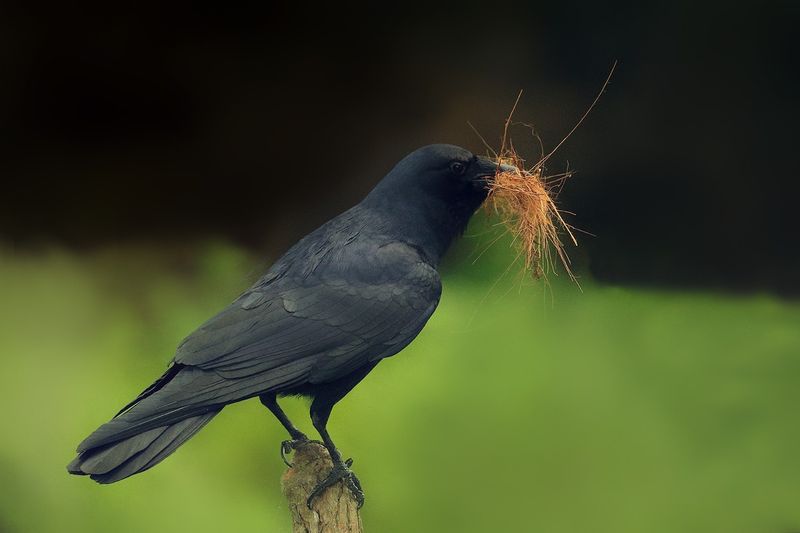
The fish crow is similar in size and appearance to the American crow but can be distinguished by its more nasal call.
Often found near water bodies, these birds are adept at exploiting aquatic environments. Their diet reflects their habitat choice, including fish, small invertebrates, and food scraps from human activity. Observing fish crows offers a chance to witness their resourcefulness in hunting and scavenging.
In social settings, fish crows are typically seen in groups, displaying social behaviors similar to other members of the crow family. Their adaptability to coastal and wetland areas highlights their unique niche in avian communities.
9. Chihuahuan Raven
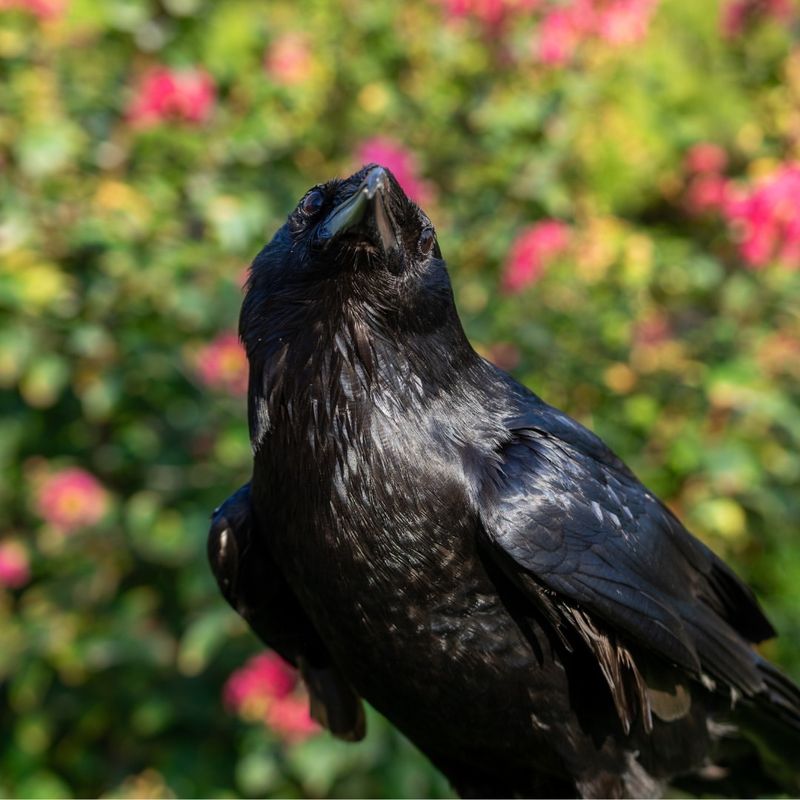
The Chihuahuan raven, while raven by name, shares physical characteristics with crows, like its glossy black feathers and wedge-shaped tail. Found primarily in arid regions of the southwestern United States and Mexico, they are well adapted to desert climates.
Their diet is varied, including carrion, insects, and seeds. They are often seen soaring in the sky, using thermals to conserve energy while searching for food. Chihuahuan ravens are social, sometimes forming large groups.
Observing them offers insights into their survival strategies and the adaptations that allow them to thrive in harsh desert environments.
10. Jackdaw
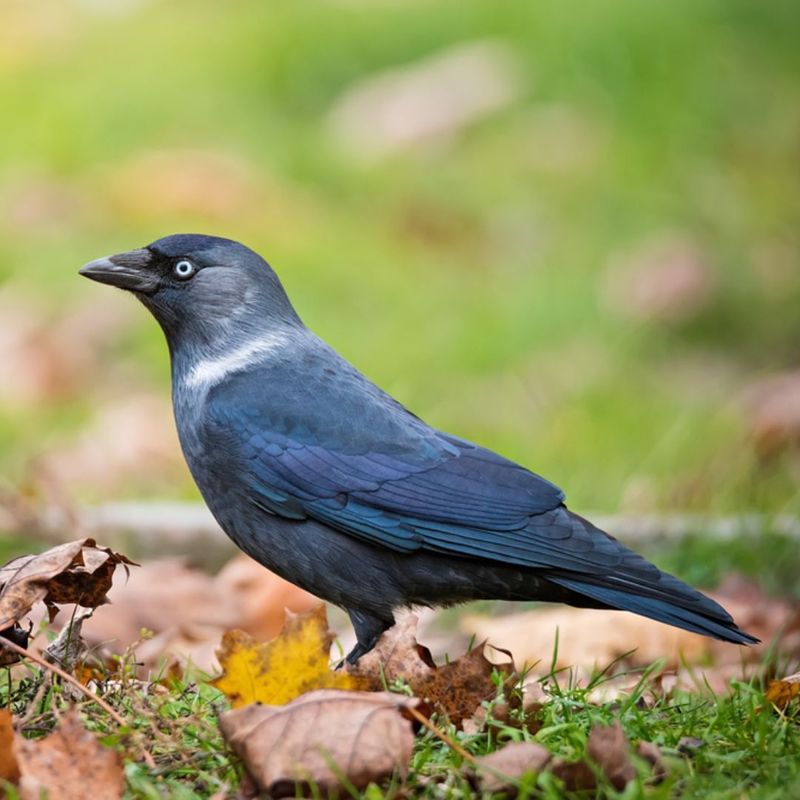
Jackdaws, small and agile, might resemble crows but have distinct features like a grey nape and striking pale eyes. Common across Europe, they are often seen around human settlements, adding a touch of nature to urban landscapes.
These birds are incredibly social, forming large flocks that exhibit coordinated flight patterns. Their diet is diverse, including insects, seeds, and food scraps. Jackdaws are known for their intelligence and curiosity, often exploring their surroundings with keen interest.
Observing them provides a look into their playful behavior and the unique role they play in both natural and urban ecosystems.

